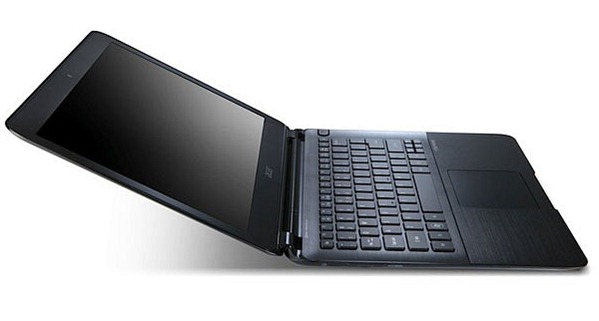This year’s CES has shown beyond a shadow of a doubt that 2012 is going to be the year that the computer market at large is going to catch up with Apple. At least, it will in the world of ultra-light, ultra-portable notebooks like the MacBook Air.
Even though Apple introduced the MacBook Air before its time and almost managed to kill it by including underpowered components and an extortionate price, the MacBook Air line has been turned into the ultimate notebook over the years, with the PC market struggling to keep up.
In the 11-inch MacBook Air and its $999 price point, Apple has a very capable machine that both looks gorgeous and manages to hit that magical $1000 barrier that parents are willing to spend on their kids when they go off to school. Throw in the fact that the smallest Mac notebook ever made is extremely portable and you are left with the ultimate in notebook computing. Assuming you want a Mac.
Now the competition is beginning to catch up in the form of Intel’s Ultrabook format, where does Apple go from here?
As CES has shown, 2012 will be the year that HP, Sony and all the rest begin to put out their MacBook Air-alikes and at similar prices to Apple’s machines, too. What can Apple do to stay ahead of the game and to make sure its notebooks can compete in an ever-changing market?
The biggest thing the company can do is something we’ve expected ever since the last MacBook Air redesign, and when Apple killed off the polycarbonate MacBook.
The signs then were that the whole MacBook and MacBook Pro line would effectively morph into a new range of MacBook Airs with larger screens and improved internals. That has to be the way the competition will go eventually, and Apple needs to get there first.
Imagine, if you will, a 15-inch MacBook Pro that looks like an Air and has that same distinctive ‘teardrop’ shape to it, making it seem impossibly thin for a notebook with such a large screen. Now make that screen 17-inches big and say with a straight face that you haven’t already got your credit card in your hand!
If Apple can get one step ahead of the competition once more, it will draw attention away form the new Ultrabooks and back to its own line of notebooks, all with a svelte silhouette and a surprising amount of power for something so thin.
And it’ll have Mac OS X on it, which those Ultrabooks can’t say either.
For discussion on this topic: Check out the threads on Facebook or Google+.
You can follow us on Twitter, add us to your circle on Google+ or like our Facebook page to keep yourself updated on all the latest from Microsoft, Google, Apple and the web.

